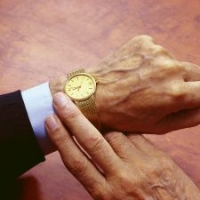Wearable Apps Not Wearing Out Welcome

Wearable tech and accessories that interact and communicate with your tablet or smartphone aren’t overwhelmingly popular—yet. But research from Gartner shows that many analysts expect a significant uptick in the number of wearable devices and connective mobile applications. In fact, Gartner’s prediction goes so far as to suggest that as many as half of all app interactions will come from wearable devices.
Brian Blau, an analyst for Gartner, explained that because most wearable devices can share the interface with a mobile device, the manufacturers are able to keep the devices small, efficient, inexpensive, and easy to maintain.
Many industry experts predict a rise in smart watches and wearable computers (read: Google Glass). Some in the industry have gone on to compare the potential rise of wearable apps to the storm of mobile development that began after Apple’s 2007 release of the iPhone. Others have even gone on to predict something much more profound for the market. Shawn Hardin, CEO of app developing company Mind Pirate, told Reuters:
A whole new app ecosystem is going to be born. Those who are going to make that happen in a big way are going to be valuable companies because of it, and those who wait too late won’t be a part of it.
Some are excited about the future of the new platforms and possibilities that wearable tech brings, but others are much more hesitant. Stuart Dredge, who writes about mobile apps and mobile content, believes that most of what is being developed still needs to stand the test of time and how successful the adaptation of wearable tech into people’s lives is won’t be understood until years from now.
Dredge goes on to explain that some of the excitement that is expected of tech like Google Glass is just empty promises until proven to actually be useful to normal people:
“Company X launches app for Wearable Device Y" is going to be a particularly-recurring headline in 2014, and that’ll be about all they’re good for: headlines. A lot of these apps’ main function will be to shift notifications from your smartphone to your wrist or eyes. That’s not really interesting.
Other opinions lie closer to a more pragmatic approach. Atishe Chordia, CEO of mobile app design and development firm doodleblue Innovations, admits that there are improvements that need to be made for wearable tech such as Google Glass, but that doesn’t mean the innovations are doomed.
Chordia compared the rise of wearable tech to the smartphone boom that began in 2007. His reason for the comparison was that the apps and use we get out of mobile phones today are different from what we even knew was possible eight years ago. He notes that the hardware and software for wearable tech will have to evolve and adapt to users’ demands just as mobile devices had to do over the last decade. But Chordia has no doubt that the future belongs to wearable technology.
Regardless of their opinion on the trajectory of wearable tech, most of those involved in the industry seem to agree on one thing: With the increasing availabilty and advancements of wearable technological devices, an explosion in the number of apps being created for them will soon follow.
Do you see a market for wearable tech and applications for them? Will the learning curve for those leading the evolution of wearable apps be steep or easily adaptable? Tell us in the comments below.

